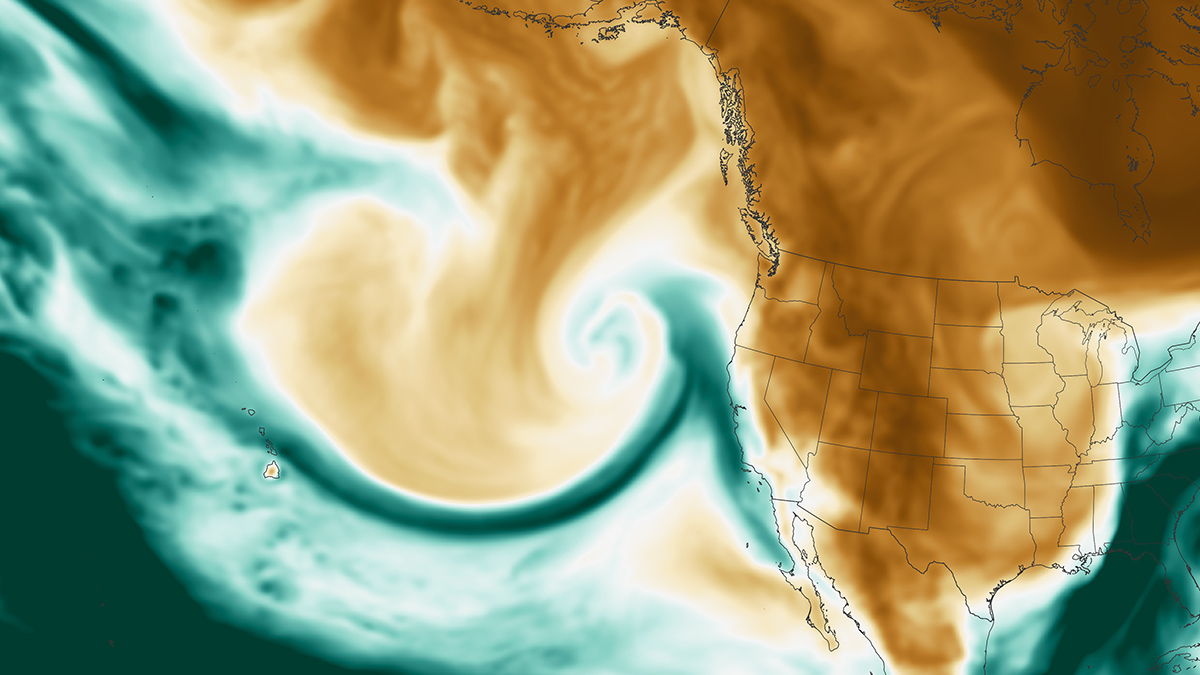Source: Journal of Geophysical Research: Atmospheres
Ribbons of water vapor called atmospheric rivers wind through the troposphere, moving the planet’s moisture from near the equator toward the poles. These aerial waterways are responsible for about 20%–30% of the annual rain and snow in parts of Europe and the United States and more than 40% in East Asia during that area’s warm season.
Climate change is predicted to alter the timing and distribution of atmospheric rivers, potentially redistributing the global supply of water. Zhang et al. used a suite of climate models called Coupled Model Intercomparison Project Phase 6 (CMIP6) to examine how the prevalence of atmospheric rivers has already changed and will continue to change in a warming world from 1980 to 2099.
Rising surface temperatures will continue to increase moisture content in the air, leading to a rise in atmospheric rivers overall, the researchers found. Globally, these events will increase by 84% between December and February and 113% between June and August under continued heavy fossil fuel use. Under medium greenhouse gas emissions, they will increase by 34% and 46% during the same time periods. The north Indian Ocean will see the most substantial increase, with atmospheric rivers doubling or perhaps even tripling in frequency. Greenland will also see a pronounced rise, with the interval between atmospheric rivers shrinking from an average of 59 days to between 30 and 41 days, depending on how fossil fuel consumption progresses.
For regions unaccustomed to receiving heavy precipitation, these shifts could be disruptive. Sudden increases in precipitation can overwhelm infrastructure, leading to damaging flooding. The potential impacts “should not be underestimated,” the researchers wrote. (Journal of Geophysical Research: Atmospheres, https://doi.org/10.1029/2023JD039359, 2024)
—Saima May Sidik (@saimamaysidik), Science Writer

